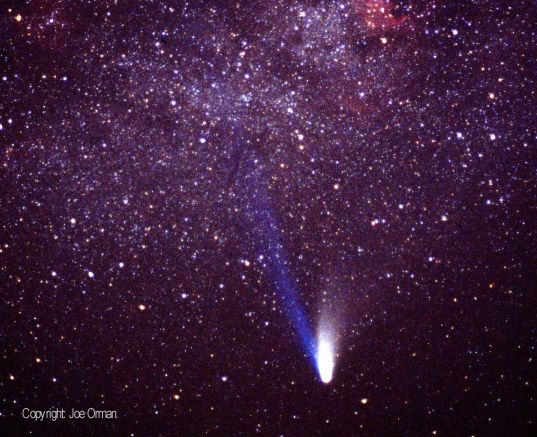Credit & Copyright: Joe Orman
Explanation:
Comets
are known for their tails.
In the spring of 1997 and 1996
Comet Hale-Bopp (above) and Comet
Hyakutake
gave us
stunning
examples as they passed near the Sun.
These extremely
active comets were bright, naked-eye spectacles
offering researchers an opportunity to
telescopically
explore the composition of primordial chunks of
our solar system by studying their long and beautiful tails.
But it has only recently been discovered that
surprising
readings from experiments on-board the
interplanetary Ulysses probe
which lasted for several hours on May 1, 1996, indicate the
probe passed through
comet Hyakutake's tail!
Ulysses experiments were
intended
to study the Sun and solar wind
and the spacecraft-comet
encounter was totally unanticipated.
Relative positions of
Ulysses
and Hyakutake on that date
indicate that this comet's ion tail stretched
an impressive 360 million miles or about four times the
Earth-Sun distance.
This makes Hyakutake's tail the longest ever
recorded
and suggests that comet tails are
much longer than previously believed.
Authors & editors:
Robert Nemiroff
(MTU) &
Jerry Bonnell
(USRA)
NASA Web Site Statements, Warnings,
and Disclaimers
NASA Official: Jay Norris.
Specific
rights apply.
A service of:
LHEA at
NASA /
GSFC
& Michigan Tech. U.
Based on Astronomy Picture
Of the Day
